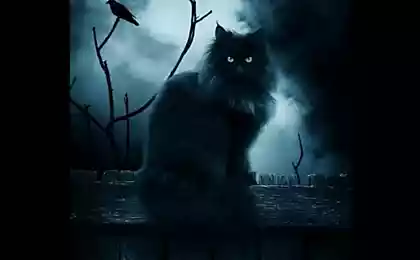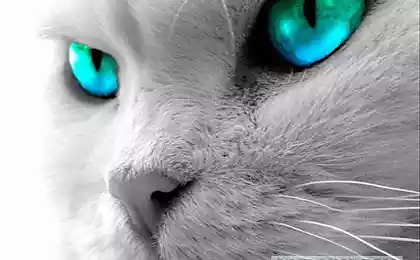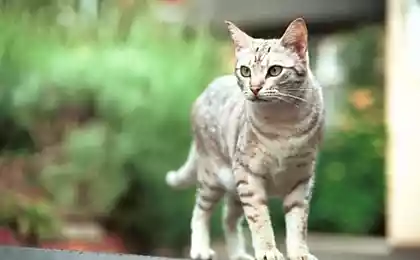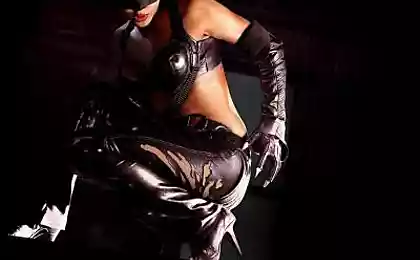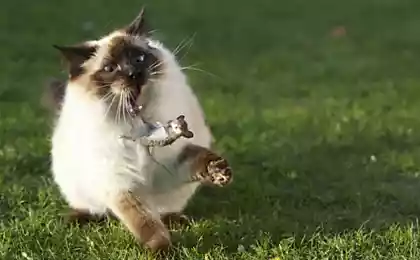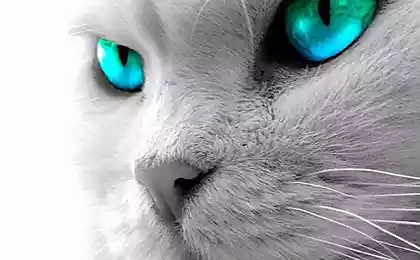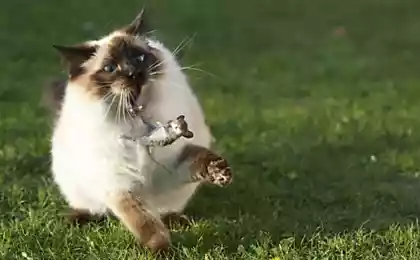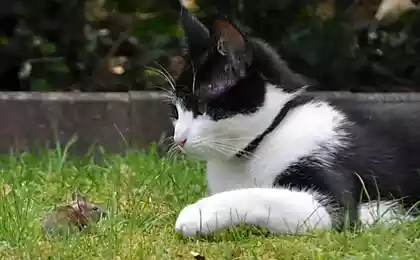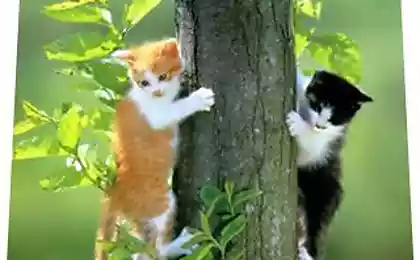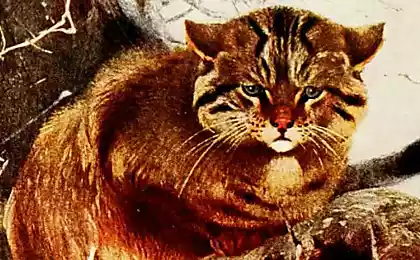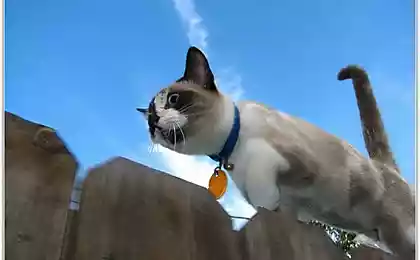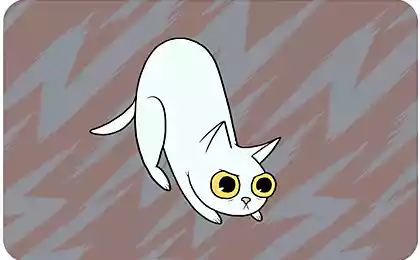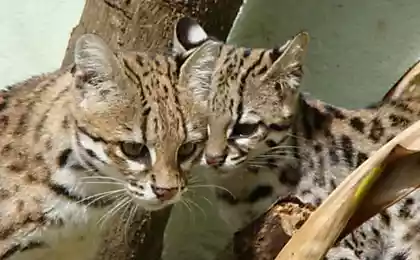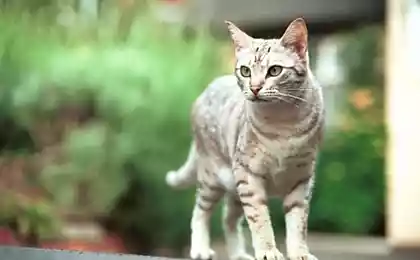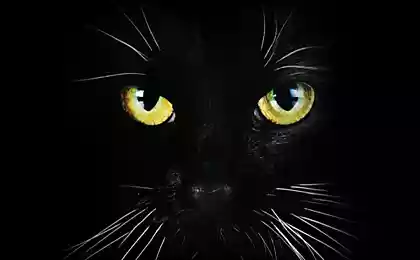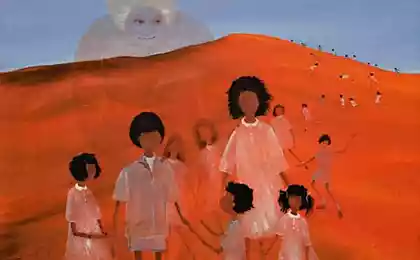353
How your cat talks to you
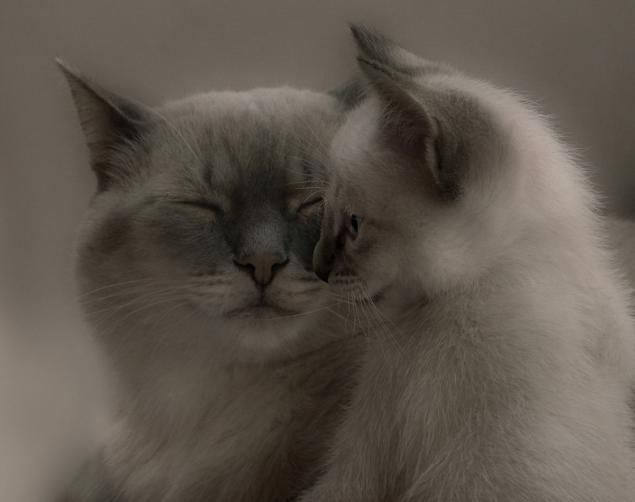
Agile, agile, muscular, flexible, with an athletic build – all these words can be applied to healthy cats. Cats use their bodies very expressively. They could be masters of restraint in speech. If a cat sits with its back to you, it means that it is telling you exactly what you think: “Not now, not here, not with you.” If a cat falls apart in front of you, then it feels free and confident. If she rolls over on her back, she may be in a relaxed, playful and trusting mood. However, one should not rely on it. A cat lying on its back may also be in a defensive position. Even a good-natured cat can bite and scratch if you stroke its belly. Many cats have an instinctive reaction.
In general, if a cat tries to appear bigger than it really is, arching its back and bristling its coat, then it is defensive. Cats tend to turn to the attacker side to look as big as possible. The cat is frightened, she tries to make a threatening appearance and will fight if forced to do so.
If a cat tries to appear smaller than nature intended, lies down, lowers its head, presses its ears and mustaches, the hair does not bristle, the tail presses against the body and perhaps waves it, touching the ground, then it is frightened and hopes that no one will notice it. She will defend herself intensively if forced, but would rather be left alone.
A cat that has fallen to the ground, half-spread, usually emitting a long low growl, pressing the tail against the body or waving it from side to side, is aggressive. Her ears are usually directed forward or upwards, the mustache is broken. Such a cat is ready and able to stand up for itself, so do not force it to do so.
The eyes are the mirror of the soul, especially for cats. Cats do not mislead anyone and their eyes will make it clear what they think of you.
If a cat looks at you for a few seconds, blinks, and then turns away, then it recognizes you, but does not invite you to communicate. It's a cat's analogue of a brief nod that you might greet someone on the street. It hardly means an invitation to a long conversation, but at the same time it is not a manifestation of rudeness.
A long, persistent look is likely to mean a threat. Such a look has universal significance, whether a stranger is looking at you in the street or a cat. It's a warning.
A cat that is friendly with you can make long-term visual contact with you in a gentle manner, and then such a look will not mean anything wrong. To understand a cat’s motives, one should read the language of its entire body in certain situations.
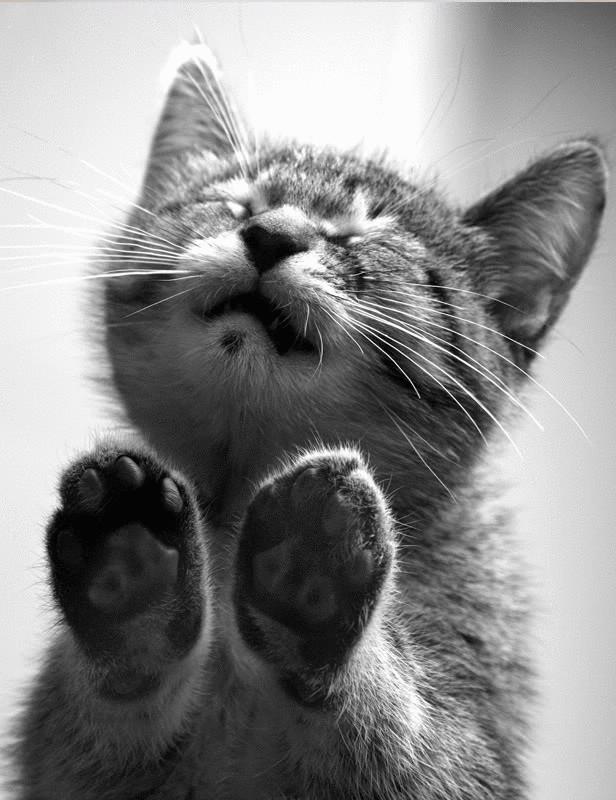
The pupils of the eyes will tell you more. If the pupils are dilated, then they are screaming with fear. If you don’t know for sure whether your cat is afraid or not, look at its pupils. Widely open eyes and dilated pupils mean something frightening is coming. In an aggressive cat, the pupils can turn into crevices as narrow as possible.
Cats’ ears are much more mobile than ours. They are shaped to capture even the slightest sound. Cats have a much sharper hearing than we do.
Because cats’ ears are so visible and so mobile, cats use them to communicate with each other. Some cats at the tips of their ears even have bundles of fur that act like flags, making the "language" spoken by their ears even more understandable.
If the ears are pointed upward, it can mean curiosity, joy, playfulness, relaxation, but whatever it is, it is always a good sign. An exception may be some aggressive cats whose ears point upwards express self-confidence rather than friendliness.
If the ears are pointed to the sides, it is a sign of fear, distrust or self-defense – it all depends on the characteristics of the particular cat and the situation. If your cat is upset, respect these signs and avoid them.
If the ears are pointed back and pressed against the head, it means panic, aggression or attack. Either way, this is a red stop light for you. Warning! Stand back if at all possible, or be prepared to pay for the consequences.
If you can read what a cat’s tail tells you, you’ll know very well what your cat is thinking.
The tail can be front, directed directly upwards. In this case, it is used to demonstrate self-confidence and pride. Cats that hold their tails like that walk importantly, pompously.
Fear can make the tail look like a bottle wash. If the tail is fluffy and seems larger than its natural size, it means a mixture of casual bravery and fear. Never try to take a frightened cat - she won't appreciate it, and neither will you.
Slow strokes of the tail mean slight irritation. Such irritation may be the result of interrupted sound sleep or unwanted stroking. Many cats want to be happy with you, but do not want you to pet them all the time. Watch carefully and don’t miss these slow tail swings. They say to you, "Enough is enough."
The quick swing of the raised tail is a joyful greeting, with the cat rubbing against her legs, meowing and purring, rejoicing at your return home.
Sometimes the cat sharply twitches the tip of the tail. She makes such movements when she looks out the window at a bird or prepares to throw herself at a toy. The longer she looks, the faster her tail twitches until finally it begins to sway intensely from side to side in its entire length.
Your cat uses the smell to mark its territory. Fortunately for you, except for the smell of cat urine, all the other odors with which it marks objects are indistinguishable from the relatively primitive human sense of smell.
Your cat probably smells you every day, although you may not know it. In cats, odorous glands are located on the lips, chin and forehead. Therefore, cats smell this or that thing when rubbing her lips and muzzle. The joyful greeting that the cat greets you as you walk through the door, as it wraps around your feet, rubs on them and purrs as it snuggles up to you, really only means that it marks you with a smell so that everyone can immediately understand: “Mine!” This man is mine, mine, mine! That's why they do it when they see us after a long day of absence or when we leave a room or enter a house from the street. Our cats tag us when they gleefully rub their heads over us every morning and this is an integral part of their daily greeting ritual. We like that. Maybe cats think we smell them when we pet them.
Scratching is another common way for cats to smell objects. On the pads of their paws they have odorous glands, and they effectively mark the smell of objects, passing them with their paws. That’s why even cats that have their claws cut still keep scratching things.
There’s another way that cats use to mark things: with their urine. For people, this method is the most unpleasant. The urine of an adult uncastrated cat seems to have the most disgusting smell in the world. This smell is strikingly resistant. You can clean this area thoroughly and yet on a warm and humid day this musty smell will haunt you.
Purring is a more mysterious process than you might think. It is commonly believed that cats purr when they are satisfied. That's true, but that's not the only condition they purr. Sometimes cats purr when they experience terrible pain.
Purring is like a runny nose. Almost everyone has experienced it, and yet we do not have a clear enough understanding of this phenomenon. But perhaps it doesn’t matter: both cats and their owners know exactly what purring means. These are the minutes they spend with each other in perfect harmony. It means reaching out in the middle of the night with your hand to your best friend who is always there. This is when a cat's head lovingly pushes a sad person into the chin. Whatever that means, cats certainly express bliss as well. There is no doubt that this is the most wonderful sound that a cat makes.
The habit of crumpling various objects dates back to the time when the kitten sucked mother’s milk and crumpled her nipples with its paws to squeeze out the milk. This behavior expresses an extreme degree of pleasure and is often accompanied by purring and drooling. Salivation is a relic of the Pavlovian conditioned reflex associated with sucking mother's milk.
The cat uses its voice virtuosoly. The usual vocal range is 750-1520 Hz. Cats pronounce about 15 simple sounds - of which seven consonants: M, N, G, X, F, B, R. Changing the duration, height, timbre, cats can say a lot to someone who understands them.
Cats make sounds for a variety of reasons, some more often, others less often. The typical sound that cats often make is a short, quiet meow, reminiscent of the joyful chirping that cats make when they see you enter. Swijka does it when she's cowardly across the room to greet me. These are joyous sounds.
There is another type of meowing that can be expressed by saying, “I want something.” These are more demanding, loud and long-lasting sounds than a welcome tweet. Most cat owners hear this sound when the meal time is right, when the cat is sitting near the door, or when it is locked in a room where it no longer wants to be.
The longest sound a cat makes is, “I hate you.” It is a cross between the growl and the squeal that cats make when they are scared or angry. Usually this sound is addressed to another cat - an uninvited guest, or a fearsome dog. It's a tense, high-throat sound resembling the sound of a siren. As soon as you hear it, you will know it.
The most wonderful sound that can be heard from cats is snorting and purring. These joyful high noises mean, "Oh, is that you?" Good to see you! These cat sounds are reserved only for their closest friends.
When cats look at prey that they can’t grab, they make quick sounds resembling “keh-keh-keh.” People don't usually hear them. However, if you have a bird feeder window and your cat is sitting by that window watching the birds but can’t reach them, you have a chance to hear that sound. The cat’s gaze in these cases is riveted to the birds, the tip of its tail twitches, and the jaw moves quickly. My Shvaika loves to sit by the balcony window for hours and, watching the birds, “cackle.”
This is how a disgruntled cat talks to its owner. Watch the video:
P.S. And remember, just changing our consumption – together we change the world!
Source: www.shvaika.info/necessarytoread/contact/contact.html
Dakota underground hearth and several non-trivial ways bonfire
Hummus and 5 more ways to use it in cooking
